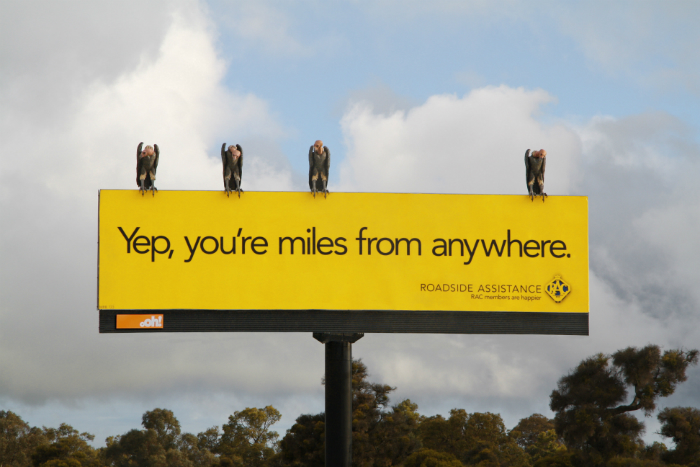
A new report released by leading print research Smithers Pira says the surging growth in printed signage will come to a stop over the next five years.
However the organisation says demand will remain at its current high levels thanks to the ability of inkjet signage to offer innovative solutions to the market.
The report, The Future of Printed Signage in an Electronic World to 2022 shows the global market for printed signage is worth US$42bn in 2017, and overall market value will increase only marginally, 0.1 per cent CAGR for the five-year forecast period, to reach US$42.1bn, in 2022 at constant prices.
The total volume of media printed for indoor and outdoor signage applications will grow slightly more across the same period, to 11.2 billion square metres in 2022, up from 10.80 billion square metres in 2017: a 0.7 per cent CAGR.
In Australia the major outdoor media asset holders APN, oOh! and QMS are all racing to switch as many of their assets to digital as they can, with oOh! reporting that revenue from digital signage is now at 44 per cent, up from 33 per cent a year ago. However they all say that print, or classic, or static outdoor media will remain a core part of their businesses.
[Related: Digital packaging market to surge]
The Smithers Pira study shows digital is a threat to traditional signs but will not replace it anytime soon. This is because processes such as lithography and screen will continue to offer long-run economies of scale, and inkjet systems are only forecast to see incremental advances in this direction and the overall print process proposition for 2017-2022 is heavily dependent on the format of signage/PoS media demanded.
The global signage market remains in a state of transition between traditional analogue print processes and digital inkjet processes. The latter have seen around a decade of strong growth at the expense of the former, and are the focus of the many of R&D budgets.
The report shows an increase in competition with the retail environment to drive sales around short term promotions such as Christmas or Halloween. These short-term promotions are creating a demand for POS and signage media.
The arrival of online retail and a greater fluency with technology among consumers means that brands are increasingly looking to adopt omni-channel marketing approaches, integrating real-world and virtual media and data. This trend creates a useful link for sellers of traditional physical media into the online world, but poses new challenges, for example how to integrate QR codes into existing display graphics.
The report shows that both these trends aligns with the continued penetration of inkjet printing into signage work, where it can handle the demands of variable data print and short runs at quick turnaround. Inkjet remains the focus of the majority of future innovation for signage printing, further marginalising litho and screen presses into low-paying applications. Wide-format inkjet printers have now settled on a fairly standard format. Evolutionary improvements in sizes, speeds, capabilities, price points, and media handling can be expected for 2017–2022 – for example, the capacity to print side-by-side simultaneously on wider-format machines, rather than on base printers.
The Future of Printed Signage in an Electronic World to 2022 segments the future demand for printed signage by both value and volume markets 2017–2022 across three key market segmentations: print process, end-use application and geographic market.
Comment below to have your say on this story.
If you have a news story or tip-off, get in touch at editorial@sprinter.com.au.
Sign up to the Sprinter newsletter

